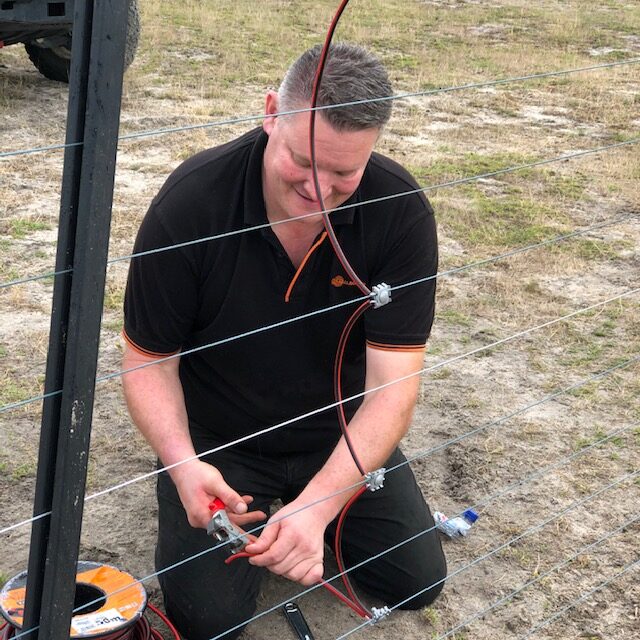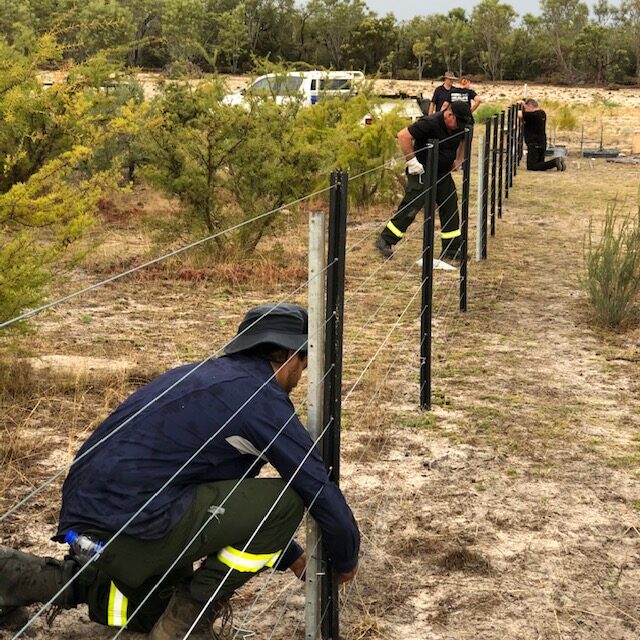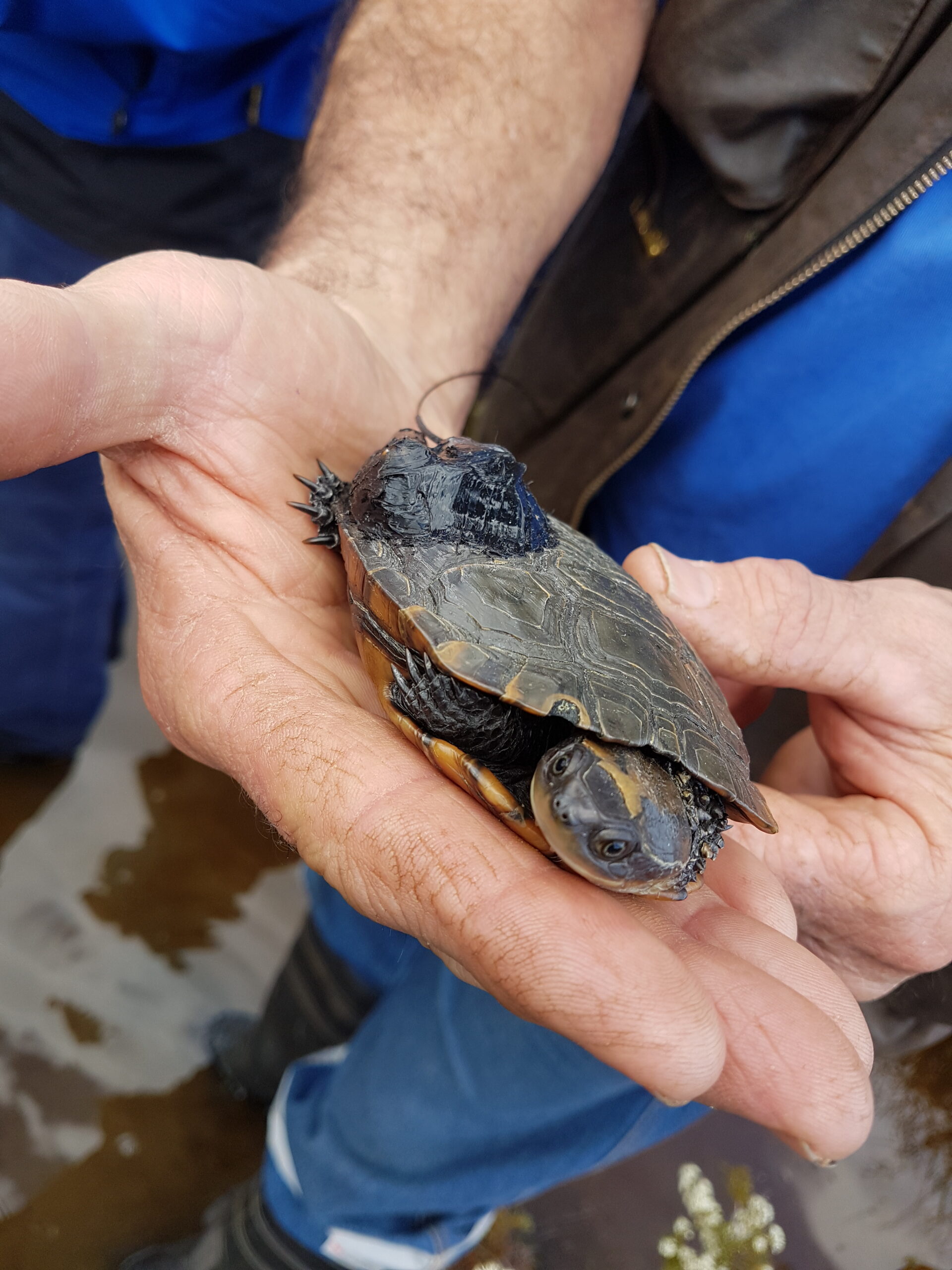Protecting a Threatened Ecological Community from Feral Pigs and other Pest Animals
Case Study
2019 Gallagher Landcare Fencing Grant
| Grant Recipient: | Ellen Brockman Integrated Catchment Group |
| State/Town: | Western Australia |
Project Overview
The Ellen Brockman Integrated Catchment Group Inc. has an extensive record of implementing projects to restore the natural healthy ecosystems and protect the waterways along the Ellen Brook and Brockman River in Western Australia.
The Group maintains a strong relationship with the Department of Biodiversity, Conservation and Attractions (DBCA) enabling them to work on government reserves and estates to help protect and revegetate habitat. As an example, the organisations worked together on a threatened species project to revegetate a 22-hectare paddock to protect the Western Swamp Tortoise and their aquatic habitat.
The Western Swamp Tortoise is one of the most Threatened Species in Australia with the majority of those remaining being bred in the zoo and released into highly restricted protected areas.
A key objective for this project was to fence a 1-hectare section of the threatened ecological community where feral pig activity had been observed. The goal was to use exclusion fencing to aid vegetation recovery and compare to a similar area that is not fenced.
In 2019, the Ellen Brockman Integrated Catchment Group was successful in obtaining a Gallagher Landcare Fencing Grant to implement this fencing project. Together with the DBCA, the Group used the grant to fence off part of the habitat of the Western Swamp Tortoise, to protect them from feral pig predation.
Implementation/Activities Undertaken
- A project site was selected at the Wannamal/Mogumber Nature Reserve because it contained a water hole that was frequented by the Western Swamp Tortoise during the winter months making them vulnerable to predation.
- Coordination of Gallagher representatives and DBCA Officers to undertake the fencing of the site.
- A pig trap and surveillance cameras were set up prior to the fencing to record feral animal movement.
- A count was done of the number of pre-fencing seedling survival numbers
- Gallagher Westonfence powered by a MBS1000i Solar Energizer was installed on the site to protect the Western Swamp Tortoise from feral pig predation
- Surveillance cameras were installed at strategic points
Environmental Outcomes
The environmental outcomes of this trial project are very encouraging showing reduced or no grazing damage to the fenced-off revegetation that provides cover and protection for the Western Swamp Tortoises that utilise the waterhole.
With the electric fencing installed, there has been no fouling of the water hole by feral pigs and no feral pigs entered the area to predate on the Western Swamp Tortoise.
Community and Social Outcomes
Knowledge sharing between the community groups working from the Chittering Landcare Centre and the Department of Biodiversity, Conservation and Attractions who is charged with the protection of Threatened Species and their habitat has been enhanced. The project results and learnings are being shared with other groups and landholders to improve protection of sensitive sites.
Conclusion
The group is continuing to monitor the fence lines and potential entry points of the feral pigs by camera and to conduct counts on the plant numbers, enabling them to make a comparison between revegetation success inside the fence and outside the fence.
According to Rosanna Hindmarsh, Executive Director of the Ellen Brockman Integrated Catchment Group, “The Gallagher Landcare Fencing Grant was timely in that the waterhole needed to be protected from feral pigs before the Western Swamp Tortoises came out of aestivation in winter time because the pigs foul the water, destroy the vegetation and predate the tortoises.”
“The funding and support from Gallagher and Landcare Australia as well as the collaboration between our community groups and the officers of the Department of Biodiversity, Conservation and Attractions to work towards protecting this threatened species has been a great experience and very successful.”
As this trial has proved successful in helping the recovery of this community, it is hoped that the Ellen Brockman Integrated Catchment Group and the Department of Biodiversity, Conservation and Attractions will be able to implement an expanded project to protect the 180 hectare reserve. Other reserves containing threatened ecological communities on the Swan Coastal Plain could also benefit from the electric exclusion fencing.
View video about this project.






